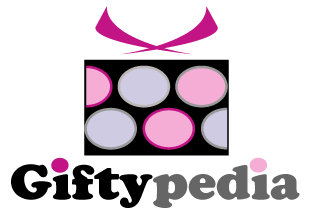Morocco Gift Giving Customs
From Giftypedia
|
Flag of Morocco Official Language: Arabic and Berber Currency: Dirham Capital: Rabat
Rich in art, architecture, and cuisine, this distinctively diverse country is a holiday destination for many travelers. From the beautiful mountains, to the colorful bazaars, and the ancient capitals of Fès and Marrakech, Morocco is a country of endless surprises that take your breath away. A diverse country in all aspects with influences from many different cultures, each region has it's own specific traditions and customs. Maintaining this diversity and preserving it's cultural heritage has become one of Morocco's top priorities. |
| Gift Giving in Morocco |
|---|
|
| Moroccan Wedding Customs |
|---|
|
In a country rich in culture and traditions, the Moroccan wedding ceremony is filled with meaning and is an elaborate process. The traditional Moroccan wedding can take from three to seven days, with many festivities that take place before the actual wedding. The entire affair can be quite expensive. In Muslim tradition, the parents would choose the groom or bridegroom for their children. These arranged marriages have since become a part of the past and most are able to choose their own partners. Family approval is still important and most parents will respect their child's decision realizing that times have changed. While tradition is still an important part of the Moroccan culture, the children will ask for the parents blessing of the marriage. The Moroccan marriage traditions start with the payment of a dowry. This is typically paid by the groom's family if they are wealthy. The dowry is used to buy household items and furnishings for the bride. Today, items such as cars, houses, or even property are given. Family, friends and relatives also send jewelry, perfumes and clothing as gifts for the bride. Five days before the wedding, the things needed for the couple, like a mattress and blanket, are taken to the bridal chamber. The bridal chamber is also where the bride prepares for the wedding ceremony with several different activities. Traditionally, the bride is given a bath in hammam the night before the wedding. This is a type of milk bath that purifies the bride. The negaffa, her female attendants, will assist in the bridal preparations. The negaffa is typically friends and relatives of the bride and older married females. Also, a "henna party", known as the beberiska ceremony is held. This is where the bride has henna applied to her hands and feet. Her wedding party also has henna applied to their palms, but the brides design is much more intricate and the groom's name is hidden in the design. The floral and geometric designs are meant to ward off evil spirits. This time is also used to give advice and share the secrets of marriage to the bride. The negaffa works to beautify the bride, dressing her in a wedding kaftan that is usually white. The kaftan is an elaborately decorated gown that is made of a brightly colored silk with a sheer cover. The bride is also decorated with many pieces of jewelry and her eyes are darkened with kohl, which is like thick black eyeliner. During the ceremony and festivities the bride will change her clothes to reflect her families region of Morocco. Today, some of these traditions are not followed. The hammam is often overlooked in the cities and towns, but is still practiced in the more rural areas. For women who consider themselves more modern, the beberiska ceremony is also not followed. While the traditional wedding kaftan is still worn it is no longer handmade. This wedding gown is now often purchased in a store as the traditional kaftan is expensive and rare. The bride will still change clothes several times during the ceremony. On the day of the wedding, food is prepared for the celebrations by the families. An abundance of food is prepared for expected and unexpected guests. It is not uncommon for a guest to also bring another guest to celebrate in the marriage festivities. Traditionally, the bride and groom would celebrate in separate locations. Sometime during the evening the groom would work his way to the bridal party. He would be followed by his friends who would be singing, beating drums and dancing. Then, the bride and groom would be taken to the bridal chamber where they were expected to consummate their marriage. In this more modern time, the food is typically catered and the festivities take place in villas or other areas of Morocco that are rented out just for the celebrations. The bride and groom still celebrate in different locations and the groom works his way to the bridal party followed by friends singing and dancing. However, instead of leaving to immediately consummate the marriage, the two parties will join together and the bride changes clothes to reflect her region of Morocco. They continue to party and eventually the bride and groom will leave for some private time. Instead of going to the marriage chamber, they will go to a hotel. For the next week, the newlyweds will visit friends and family and also invite guests to their home to show off their new home and wedding gifts. Traditionally and still today, marriage is one of the most important decision in ones life. |
| Moroccan Culture and Etiquette |
|---|
|
Morocco is a Muslim country. Islam is practiced by most Moroccans and the traditions and culture of the Islamic religion is seen in the everyday lives of a Moroccan. Muslims pray five times per day, at dawn, noon, afternoon, sunset, and evening. The Holy Day is Friday and everything is closed. Fasting from daybreak until sunset is practiced during the holy month of Ramadan. Also, during the holy month, shops are opened at unusual times and in general everything runs at a slower pace. A Moroccan's honor and dignity is of the utmost importance. With this there are certain ways to behave in public. In some ways, Moroccan's will do and say things in public that makes them look good. This behavior also reflects on the family. Family is the core of the Moroccan life and includes the immediate family and the extended family. In Morocco, elders are highly respected and have a great deal of influence over the family. When visiting Morocco, men and women alike should dress conservatively. Women should cover all bare skin from the ankles up and wrist up. Depending on where you are in the country, sometimes the dress can be a little less strict. This would include at the beaches and visiting the cities of Rabat and Casablanca. For women, being professionally dressed for business could be a business suit, dress or pant suit while still ensuring that you covered down to the below the knee and most of the arm. For men, a dark colored business suit is appropriate. In Morocco, the left hand is considered unclean and the right hand should be used for pretty much everything. Do not gesture or eat with your left hand, even if you are left handed. A greeting from a Moroccan will be a handshake at the first meeting and until they get to know you. Once a relationship has been established the greeting will be a kiss on both cheeks. This is done between man and man and woman and woman. In a greeting between man and woman, the woman must extend their hand first. If this is not done the man should bow his head in greeting. If invited to a Moroccan's home you should always remove your shoes before entering. Dinner is typically served at a knee high table and the food is served in a large bowl that everyone eats from. You should eat from the section of the bowl that is immediately in front of you. Be prepared to be encouraged to eat. As a sign of hospitality, offering an abundance of food is common. |
Related Pages
- Moroccan Holidays
- International Gift Customs
- How to Avoid Controversial or Inappropriate Gifts
- Etiquette for Office / Business Gift Giving
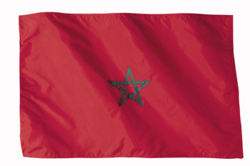
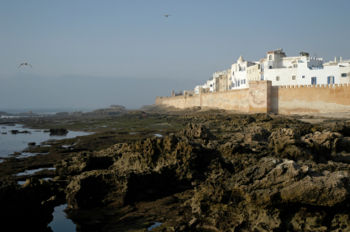


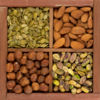
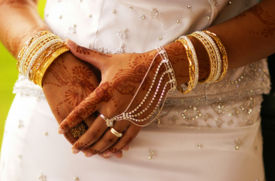
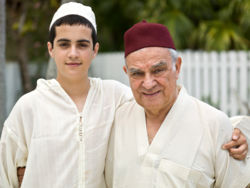
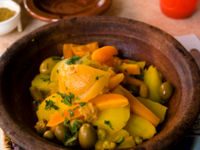

 Printer Friendly
Printer Friendly
